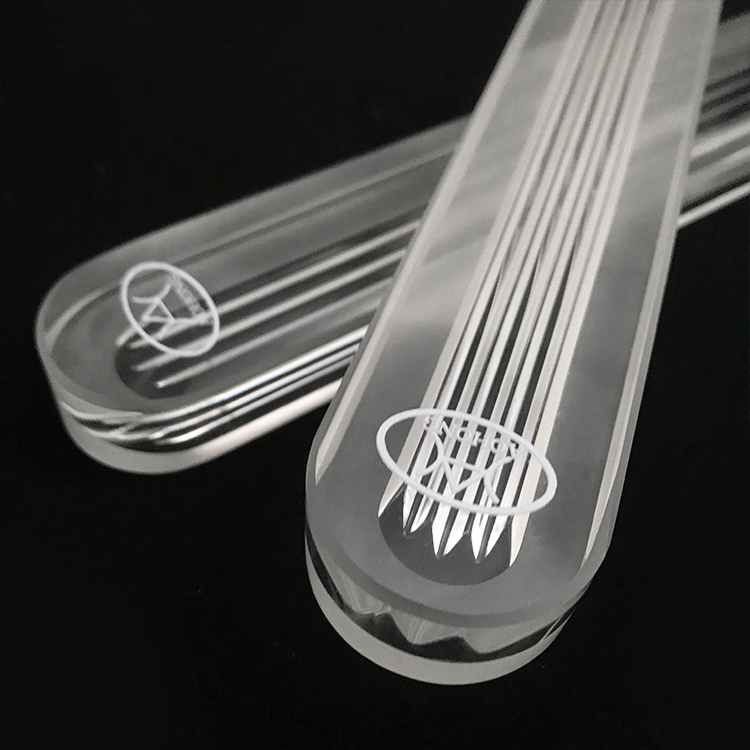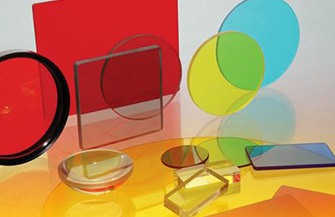

People can see through sight glasses (level gauge glass). When the inner face fogs, the outer face blooms. If the glass body turns translucent, operators can’t see the true liquid level. This can lead to minor misoperations or, in severe cases, a dry run or overflow. About 80% of visual issues aren't from glass breakage. These issues can be reversed or prevented. These include surface scale, condensation, or sealing failure. Here's a practical troubleshooting and remedy guide based on real maintenance records (no “miracle cures”).
Inner-surface condensation (water mist). Steam condenses to 1–5 μm droplets that look like breath fog; it is common during cold starts or winter.
Inner-surface salt/soil or oil films. Media processes NaCl, CaCO₃, silicates, or heavy oil. These substances evaporate, leaving white, gray, or yellow films.
Glass body loss of transparency (etching/devitrification). Long-term high temperatures and alkaline conditions (pH > 10) cause micro-cracking. This results in 20–100 nm cracks and light scattering. The glass then looks frosted and cannot return to its original state.
Safety first: Stop pumps. Isolate valves. Depressurize to 0 MPa. Wait until the temperature is below 50 °C before touching anything. For high-pressure systems, blind off.
Step 1 — Identify which side fogged. Use an oblique, strong flashlight:
If the bright spot shifts on the outer face, it becomes an external deposit.
If the bright spot moves on the inside face, it indicates an internal deposit or body etching.
Step 2 — Thickness and hardness check
Measure glass thickness at four points using a 0–25 mm micrometer. Then, record the smallest measurement.
Measure surface hardness with a Barcol hardness tester (HBa-1). New borosilicate sight glass ~120 ± 5 HBa. If HBa is below 105 and the surface appears dull, consider alkali-induced devitrification. This is irreversible, so cleaning won’t help; you will need to replace it.
Step 3 — Small area cleaning test (1 cm²)
External scale: swab with 5% citric acid or 5% HCl for 30 s, rinse with water; if polished clear → continue cleaning.
Remove the tube.
Rinse it with water.
Ultrasonic clean for 10 minutes in a 60 °C 5% Na₂CO₃ solution.
Then, flush with alcohol to dehydrate.
Oil film: Wipe in one direction with cotton soaked in petroleum ether or isopropanol. Don’t rub back and forth, as this can cause smearing.
If the test area still will not clear, proceed to replacement.
Removing old glass
Loosen M8 bolts in diagonal order by 1/2 turn → another 1/2 turn → until they are loose.
Remove the old gasket with a copper scraper. Don’t use a steel saw or hard scraper, as they can scratch the sealing grooves.
Seal material selection
Ambient water service: EPDM gasket, Shore 70.
Mildly alkaline service up to 150 °C: FKM (fluoroelastomer).
≥ 250 °C or heat transfer oil: flexible graphite composite gasket, thickness of 1.5 mm.
Bolt preload/torque
Borosilicate glass: compressive strength ~800 MPa, tensile strength ~40 MPa. Overtorquing is the leading cause of edge cracking.
Recommended torque: M8 = 12 N·m; M10 = 20 N·m.
Tighten in a cross pattern in two stages. Then, check the sequence again. For the final check, use a 0.1 mm feeler gauge. It should not fit between the glass face and the seat.
A. Dry gas purging (microsweep)
Inject instrument air or nitrogen (0.05 MPa) between upper and lower isolation cocks. Flow: ~0.5 L/min, dew point < −20 °C. This keeps the local dew point below the process temperature. So, it prevents condensation effectively.
B. Hydrophilic anti-fog coating
Apply 0.5% silane coupling agent and 0.2% polyether-modified silicone oil to cleaned glass. Cure at 150 °C for 30 minutes. It forms a ~50 nm hydrophilic layer that spreads droplets into a uniform film. Single coating life: ~12–18 months; periodic re-coating is required.
C. Upgrade the glass material.
Use high-borosilicate, low thermal expansion glass (α ≈ 3.3×10⁻⁶ /°C). It withstands ΔT > 120 °C without fogging. It cuts the alkali etch rate by about 60% compared to soda-lime glass. This makes it ideal for high-temperature alkaline gauges.
Case 1 — Boiler drum (12 MPa) sight glass, Inner Mongolia
Symptom: inner face fully white within 30 min of startup in winter — unreadable.
Diagnosis: the flashlight showed a spot on the outside (→ condensation).
Fix: purge 0.05 MPa instrument air (dew point −25 °C) at 0.6 L/min between isolation cocks → fog cleared in 10 min. No recurrence over two heating seasons.
Case 2 — 32% caustic storage tank sight glass, Shandong Chemical Plant
After 3 years, the glass looked frosted; cleaning was ineffective. Thickness: 15 mm → thinnest 14.72 mm; hardness 98 HBa (new 122).
Determination: alkali-induced devitrification.
Remedy:
After 4 years, hardness 118 HBa, and no signs of devitrification.
Replace with high borosilicate glass.
Use a flexible graphite gasket.
Reduce bolt torque to 20 N·m (M10).

“Tighter is better.” Too much torque can cause micro-cracks at the glass edge. Then, this can lead to delayed spontaneous breakage.
Toothpaste polish works. It has SiO₂ abrasives that can scratch grooves as small as 5 μm. This scratching can make future fouling worse.
“Stronger acid cleans better.” HCl over 10% pulls Na⁺ from the glass network. This roughens the surface and causes permanent clouding.
| Phenomenon | Location | Diagnostic tool | Determination | Action |
|---|---|---|---|---|
| Removable film | Inner/Outer | Cotton swab + citric acid | Scale | Clean |
| Non-removable cloud | Inner | Hardness < 105 HBa | Devitrification | Replace |
| Large droplets | Inner | Flashlight oblique | Condensation | Dry gas purge |
| Rainbow pattern | Outer | Polarizer | Stress crack | Replace |
Post this table in the control room; follow the steps and “sight glass fogging” will no longer be a panic item.
Include the required glass type in the buy specs. Use high borosilicate for alkaline or high-temp needs. Also, specify the surface mat.
Specify gasket material by service media and temperature.
Provide torque values and tightening sequence in the valve/sight glass SOP.
Stock a spare sight glass kit and anode-free replacement procedure for emergency swaps.
This guide helps troubleshoot cloudy or fogged sight glasses. It’s for front-line operators, maintenance technicians, and design engineers. Follow these steps: identify the side, check the hardness, and do a small-area cleaning test.
Apply the right fix:
Clean
Use a dry gas purge.
Add a hydrophilic coating.
Replace with better glasses.
Using the right gasket and the right torque helps avoid failures and keeps things safe. Correct assembly and preventive measures are key. Keep this page and checklist handy at the console. They will help speed up recovery from visual faults.
(Keyword reiterated: troubleshooting cloudy or fogged sight glasses.)
Copyright © Hengshui Aohong Special Glass Manufacturing Co., Ltd. All Rights Reserved | Sitemap